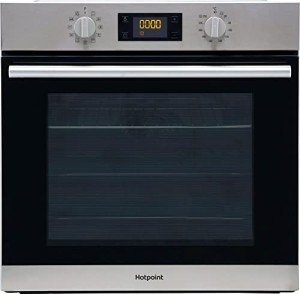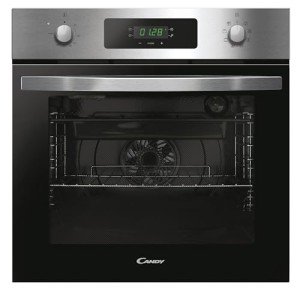
Single Ovens Electric
Add a review FollowOverview
-
Founded Date November 27, 2005
-
Sectors Optical Manager
-
Posted Jobs 0
-
Viewed 32
Company Description
There’s Enough! 15 Things About Single Oven We’re Fed Up Of Hearing
The Ultimate Guide to Single Ovens: Features, Benefits, and FAQs
When it pertains to modern-day kitchen devices, the single oven sticks out as a flexible and necessary tool for any cooking enthusiast. In today’s busy world, where convenience meets cooking craftsmanship, single ovens play a critical function in meal preparation. Understanding the features, advantages, and kinds of single ovens can streamline the process of picking the ideal home appliance for your kitchen. This extensive guide intends to provide an in-depth take a look at single ovens, their specifications, ovensandhobs and responses to frequently asked questions.
What is a Single Oven?
A single oven is a kitchen device that features one main cooking compartment. It is designed to carry out various cooking functions such as baking, roasting, broiling, and more. Unlike double ovens, which consist of two different cavities, single ovens maximize space performance, making them suitable for smaller sized kitchens or those who frequently prepare meals for a few people.
The Anatomy of a Single Oven
In order to value the performance of a single oven, understanding its key components is essential:
| Component | Description |
|---|---|
| Cooking Cavity | Main space where food is positioned for cooking. |
| Control Panel | Interface for selecting cooking modes and changing temperature. |
| Heating Elements | Metal coils that produce heat (often found at the top and bottom). |
| Oven Door | Glass panel that permits visibility into the cooking area. |
| Racks | Detachable shelves that accommodate numerous meals at different heights. |
Types of Single Ovens
Single ovens been available in numerous types based upon their heating methods and styles. Here are some popular options:
-
Conventional Ovens: Utilize gas or electrical power for a traditional cooking experience. They offer constant heat for baking and roasting.
-
Convection Ovens: Equipped with a fan that flows hot air, leading to quicker cooking times and even heat circulation.
-
Steam Ovens: Use steam to cook food, maintaining moisture and nutrients. Suitable for much healthier cooking methods.
-
Wall Ovens: Built into the wall to save area; they can boost kitchen aesthetic appeals while providing functionality.
-
Microwave Ovens: While not a traditional oven, contemporary microwave ovens can also bake and roast, offering convenience for quick meal preparation.
Functions to Look for in a Single Oven
When acquiring a single oven, think about the following features to guarantee you select a device that matches your cooking needs:
-
Capacity: Ensure the oven’s size accommodates your normal cooking volume. Requirement capabilities typically range from 4.5 to 6 cubic feet.
-
Temperature level Range: Look for an oven that offers a broad temperature range for various cooking strategies.
-
Self-Cleaning Options: Self-cleaning modes bypass the need for severe chemicals, making maintenance simpler.
-
Smart Technology: Wi-Fi-enabled models enable remote operation and monitoring through smartphone applications.
-
Interior Lighting: Bright, incandescent or LED lighting helps monitor your food without opening the door.
Typical Sizes and Capacities of Single Ovens
| Type | Average Capacity (cubic feet) | Width (inches) | Height (inches) |
|---|---|---|---|
| Standard Conventional | 5.0 – 6.0 | 30 | 28 – 30 |
| Compact/Apartment Size | 3.0 – 4.0 | 24 | 28 – 30 |
| Wall Oven | 4.5 – 5.0 | 24 – 30 | 28 – 30 |
Advantages of Using a Single Oven
Investing in a single oven uses numerous advantages for both amateur cooks and seasoned chefs alike:
-
Space Efficiency: A single oven occupies less area than a double oven, making it perfect for smaller sized cooking areas.
-
Affordable: Generally less costly compared to double ovens, both in preliminary purchase and energy usage.
-
Adaptability: Capable of performing numerous cooking strategies, making it suitable for a variety of recipes.
-
Relieve of Use: With a smaller cooking area, heat circulation tends to be more effective, streamlining the cooking process.
-
Maintenance: Fewer elements mean less intricacy when it comes to cleansing and repair work.
Regularly Asked Questions (FAQs)
What is the average lifespan of a single oven?
A single oven normally lasts between 10 to 15 years, depending upon usage, maintenance, and the quality of the device.
How can a single oven save energy?
Single ovens need less power than double ovens, and lots of designs are designed with energy effectiveness in mind, lowering general energy usage.
Can a stove replace a basic oven?
Yes, a stove can change a standard oven as it provides comparable cooking functions together with much faster cooking times.
Are single ovens appropriate for large households?
While single ovens can accommodate a good amount of food, bigger families may discover that a double oven or an additional single oven suits their needs more effectively.
How frequently should I clean my single oven?
It is suggested to clean your oven every three to six months, depending on use, to preserve hygiene and efficiency, especially with models that include self-cleaning alternatives.

Is installation hard for a single oven?
The majority of single ovens featured uncomplicated installation directions. Nevertheless, speaking with an expert is suggested for safe and proper setup, especially for gas ovens.
The single oven remains a foundation home appliance in kitchens worldwide. Its flexibility, effectiveness, and space-saving design make it an appealing option for numerous households. Whether you are an occasional cook or a culinary aficionado, choosing the ideal single oven can significantly improve your cooking experience. With the information shared in this guide, prospective purchasers can make a notified choice, guaranteeing they pick an oven that best suits their culinary needs and lifestyle.

